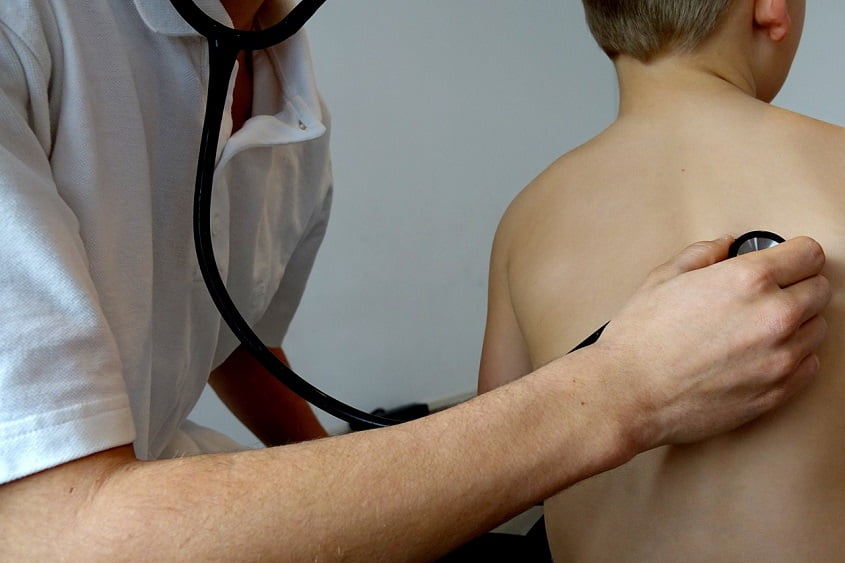The Connection Between Bronchitis and Other Respiratory Illnesses
- Updated on: Nov 1, 2023
- 5 min Read
- Published on Jan 24, 2023

Bronchitis is an inflammation of the bronchial tubes, which are the airways that carry air to and from the lungs. It is usually caused by a viral or bacterial infection, but can also be caused by exposure to irritants such as cigarette smoke or air pollution. Symptoms of bronchitis include coughing, chest congestion, shortness of breath, and difficulty breathing.
Other respiratory illnesses are a group of illnesses that affect the lungs and airways. Some examples of other respiratory illnesses include:
- Asthma: a chronic condition that causes inflammation and narrowing of the airways, leading to difficulty breathing and wheezing.
- Pneumonia: an infection of the lungs that causes inflammation and fills the air sacs with fluid or pus. Symptoms include fever, cough, chest pain, and difficulty breathing.
- Chronic Obstructive Pulmonary Disease (COPD): a group of lung diseases that make it difficult to breathe. COPD is usually caused by smoking and exposure to lung irritants. Symptoms include coughing, shortness of breath, and difficulty breathing.
- Tuberculosis: a bacterial infection that mainly affects the lungs but can also affect other parts of the body. Symptoms include persistent cough with phlegm, chest pain, and weight loss.
Importance of understanding the connection between bronchitis and other respiratory illnesses
Understanding the connection between bronchitis and other respiratory illnesses is important for several reasons:
- Proper diagnosis: Knowing the signs and symptoms of bronchitis and other respiratory illnesses can help doctors accurately diagnose the condition and provide appropriate treatment.
- Effective treatment: Understanding the underlying causes and risk factors of bronchitis and other respiratory illnesses can help healthcare providers develop more effective treatment plans.
- Prevention: Identifying the connection between bronchitis and other respiratory illnesses can help individuals take steps to reduce their risk of developing these conditions.
- Management: Knowing the connection between bronchitis and other respiratory illnesses can help individuals manage and treat these conditions more effectively. By understanding how these conditions are related, individuals can take a more holistic approach to managing their respiratory health.
- Long term health: Respiratory illnesses can often lead to complications and long-term health problems if left untreated or improperly managed. Knowing the connection between bronchitis and other respiratory illnesses can help people take steps to protect their lung health and avoid long-term complications.
Bronchitis
Bronchitis is an inflammation of the bronchial tubes, the airways that carry air to and from the lungs. It is typically caused by a viral or bacterial infection, but can also be caused by exposure to irritants such as cigarette smoke or air pollution.
Acute bronchitis is a short-term condition that typically clears up within a few weeks. It’s usually caused by a viral infection such as the common cold or the flu.
Chronic bronchitis, on the other hand, is a long-term condition that results from chronic irritation of the bronchial tubes. It’s a form of chronic obstructive pulmonary disease (COPD) and its commonly caused by smoking or inhaling other lung irritants such as pollution over an extended period.
Both types of bronchitis can cause similar symptoms like cough, chest congestion, shortness of breath, and difficulty breathing. It is important to see a healthcare professional to confirm the diagnosis and get the appropriate treatment.
Diagnosis and treatment of bronchitis
The diagnosis of bronchitis is typically made based on a combination of a person’s symptoms, medical history, and a physical examination. A healthcare provider may also order tests such as a chest X-ray or a pulmonary function test to help confirm the diagnosis.
Treatment of acute bronchitis typically involves relieving symptoms and allowing the infection to run its course. Over-the-counter medications such as acetaminophen or ibuprofen can help reduce fever and relieve muscle aches and pains. Steam inhalation or using a humidifier can also help to loosen mucus and make breathing easier. In severe cases or when there are complications, antibiotics may be prescribed.
Treatment of chronic bronchitis often involves a combination of self-care measures and medical treatment to help control symptoms, reduce flare-ups and prevent complications. Treatments may include bronchodilators to open airways, inhaled corticosteroids to reduce inflammation, oxygen therapy for those with low oxygen levels, quit smoking and avoiding lung irritants. Vaccinations against flu and pneumonia are also recommended for individuals with chronic bronchitis. In some cases, surgery may be an option to remove damaged tissue and improve breathing.
Other Respiratory Illnesses
Asthma, pneumonia, and COPD (Chronic Obstructive Pulmonary Disease) are all common respiratory illnesses.
Asthma is a chronic respiratory disease that causes inflammation and narrowing of the airways, leading to difficulty breathing and wheezing. Asthma symptoms can be triggered by allergens, pollution, or viral infections. It is usually treated with medications such as inhaled corticosteroids and bronchodilators, as well as with self-management education to prevent exacerbations and complications.
Pneumonia is an infection of the lungs that causes inflammation and fills the air sacs with fluid or pus. It can be caused by bacteria, viruses, or fungi, and symptoms include fever, cough, chest pain, and difficulty breathing. Pneumonia can be treated with antibiotics, antiviral medications or antifungal medications, and supportive care.
COPD is a group of lung diseases that make it difficult to breathe. It includes chronic bronchitis and emphysema and is usually caused by smoking and exposure to lung irritants. Symptoms include coughing, shortness of breath, and difficulty breathing. COPD is treated with medications such as bronchodilators, inhaled corticosteroids, and oxygen therapy, as well as with self-management education to prevent exacerbations and complications. Additionally, quitting smoking is crucial for preventing further lung damage and managing symptoms.
Symptoms and diagnosis of these illnesses
Asthma, pneumonia, and COPD (Chronic Obstructive Pulmonary Disease) are all respiratory illnesses that can have similar symptoms, but they also have distinct symptoms that can help in the diagnosis process.
Symptoms of asthma include wheezing, shortness of breath, chest tightness, and coughing, particularly at night or early in the morning. Asthma can be diagnosed through lung function tests, such as spirometry, and by measuring the level of inflammation in the airways through peak expiratory flow (PEF) measurement or exhaled nitric oxide test (FeNO).
Symptoms of pneumonia include fever, cough with mucus or phlegm, chest pain, and difficulty breathing. Pneumonia can be diagnosed through chest X-ray, blood tests and physical examination, and in some cases, a sample of the sputum may be taken for lab analysis to identify the cause of the infection (virus, bacteria or fungi).
Symptoms of COPD include persistent cough, shortness of breath, and difficulty breathing, particularly during physical activity. Diagnosis of COPD is typically based on a combination of a person’s symptoms, medical history, and a physical examination. Spirometry, a simple test that measures how well you can breathe, can confirm the diagnosis and assess the severity of the disease. Chest X-ray or CT scan may also be performed to confirm the diagnosis and evaluate the extent of the lung damage.
Prevention and Management
Prevention and management of bronchitis and other respiratory illnesses involve a combination of self-care measures and medical treatment.
To prevent respiratory illnesses, it’s important to avoid known triggers and risk factors such as cigarette smoke, air pollution and certain infections. Other preventive measures include:
- Getting vaccinated against flu and pneumococcal infections
- Washing your hands frequently to reduce the spread of infections
- Exercising regularly to improve lung function
- Eating a healthy diet and maintaining a healthy weight
- Managing other underlying health conditions such as diabetes, asthma or heart disease which may increase the risk of respiratory illness
To manage respiratory illnesses, it’s important to follow a treatment plan that may include:
- Medications: Inhaled bronchodilators and corticosteroids can help to open airways and reduce inflammation
- Oxygen therapy for those with low oxygen levels
- Pulmonary rehabilitation: This program of exercise, education, and counseling can help people with COPD and other lung diseases to improve their breathing, energy levels and quality of life.
- Quit smoking: Smoking is a main cause of COPD and other respiratory illness and quitting is crucial for preventing further lung damage and managing symptoms.
- Self-management: learning how to recognize the signs of an exacerbation and how to manage them early, such as using a peak flow meter, keeping a symptom diary, or using a plan of action.










